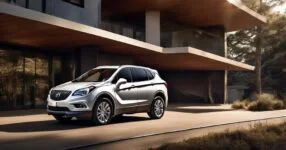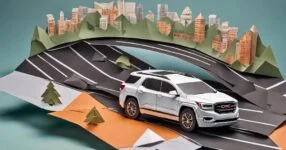The pros of the Nissan Xterra are its exceptional off-road capabilities, ensuring thrilling, adventurous rides, and the vehicle’s impressive longevity, averaging about 200,000 miles. It offers solid reliability, versatile cargo solutions, accommodating passengers and gear efficiently.
The cons of the Nissan Xterra are its so-so on-road handling, which pales in comparison to its off-road prowess, and the outdated features and tech, making it seem behind modern SUVs. Additionally, the Xterra’s poor fuel economy challenges its efficiency, and the use of low-quality interior plastics detracts from cabin aesthetics.
Takeaways:
- The Nissan Xterra excels in off-road capabilities with high ground clearance and a sophisticated four-wheel-drive system.
- It offers a spacious interior and considerable cargo space, making it suitable for outdoor and gear-heavy activities.
- Despite its strengths, the Xterra suffers from poor fuel efficiency, averaging 17mpg in the city and 20mpg on the highway.
- Its discontinuation in 2015 may pose challenges in finding parts and limits modern technological features.
| Pros of Nissan Xterra | Cons of Nissan Xterra |
|---|---|
| Legitimate Off-Roader | So-So On-Road Handling |
| Impressive Longevity | Outdated Features and Tech |
| Solid Reliability | Poor Fuel Economy |
| Versatile Cargo Solutions | Low-Quality Interior Plastics |
| Strong Resale Value | Soft Brake Pedal |
| Powerful V6 Engine | Unimpressive Interior Design |
| Standard Features | Poor Sales and Discontinuation |
| Easy-to-Clean Interior | Expensive Emission and Safety System Upgrades |
| Ample Ground Clearance | Radiator Leaks and Transmission Problems |
| Thoughtful Cargo-Area Features | Timing Chain Issues |
Pros of Nissan Xterra
- Legitimate Off-Roader: The Nissan Xterra shines with its superior off-road capabilities, equipped to tackle rough terrain that many other SUVs cannot handle. This is supported by its adequate ground clearance and robust suspension system, making it an ideal choice for adventurers and outdoor enthusiasts.
- Impressive Longevity: With an average lifespan extending to about 200,000 miles, the Xterra demonstrates remarkable durability. This longevity is a testament to its solid construction and the quality of its components, ensuring that it remains reliable over the years.
- Solid Reliability: The Xterra’s reliability rating of 4.0 out of 5.0 by RepairPal underscores its dependability as a vehicle. Owners can expect consistent performance and fewer unexpected maintenance issues compared to other vehicles in its class.
- Versatile Cargo Solutions: Featuring thoughtful cargo-area features and more interior room than expected, the Xterra excels in providing practical storage solutions. Its easy-to-clean interior and adaptable cargo space make it suitable for both daily commutes and adventurous getaways.
- Strong Resale Value: Despite being discontinued, the Xterra maintains a strong resale value, reflecting its enduring popularity among used car buyers. This is attributed to its off-road prowess, reliability, and the niche it occupies in the market.
- Powerful V6 Engine: The 4.0-liter V6 engine under the hood of the Xterra delivers great power and torque, ensuring robust performance both on and off the road. This powertrain is key to the SUV’s capability to navigate challenging terrains with ease.
- Standard Features: With standard features like Bluetooth connectivity, a rearview camera, and a seven-inch touchscreen display, the Xterra offers a level of convenience and tech that adds value to its base offering.
- Easy-to-Clean Interior: The interior design of the Xterra, while straightforward, is notably easy to clean, which is a significant advantage for those who use their vehicle in rugged outdoor activities. This practicality enhances the overall ownership experience.
- Ample Ground Clearance: The Xterra’s adequate ground clearance is a critical feature for off-road driving, allowing it to overcome obstacles and uneven surfaces without sustaining damage to the undercarriage. This capability is essential for navigating challenging trails.
- Thoughtful Cargo-Area Features: The cargo room in the Xterra is not only spacious but also includes well-thought-out features that enhance its utility. These include tie-downs and storage compartments that help secure gear and keep it organized during transit.
Cons of Nissan Xterra
- So-So On-Road Handling: While the Xterra excels off-road, its on-road handling leaves something to be desired. The soft suspension contributes to a less stable and less responsive driving experience on paved roads, which might detract from its appeal as an everyday vehicle.
- Outdated Features and Tech: Compared to more modern SUVs, the Xterra’s technology and features can feel outdated. This is evident in its entertainment system and connectivity options, which lag behind the offerings in newer models.
- Poor Fuel Economy: The Xterra’s fuel efficiency is not its strong suit, particularly when compared to other vehicles in its class. This lower fuel economy can lead to higher operational costs over time, especially for those who drive frequently.
- Low-Quality Interior Plastics: The interior of the Xterra extensively uses low-quality plastics, which can detract from the overall feel and appearance of the cabin. This material choice can lead to a less luxurious and more utilitarian interior experience.
- Soft Brake Pedal: Some drivers may find the Xterra’s brake pedal to be soft, potentially affecting the precision of braking responses. This characteristic can impact the driving experience, especially in situations that require quick or emergency braking.
- Unimpressive Interior Design: The design of the Xterra’s interior is practical but lacks the aesthetic appeal and sophistication found in some competitors. This utilitarian approach might not meet the expectations of those looking for a more refined interior.
- Poor Sales and Discontinuation: The discontinuation of the Xterra in 2015 was partly due to poor sales, reflecting challenges in competing with more modern and fuel-efficient models. This discontinuation may limit the availability of newer used models and parts over time.
- Expensive Emission and Safety System Upgrades: The cost associated with upgrading the Xterra’s emissions and safety systems to meet current standards can be high. This expense might be a consideration for those looking to maintain the vehicle in regions with strict environmental and safety regulations.
- Radiator Leaks and Transmission Problems: The Xterra has a known issue with radiator leaks leading to transmission problems, particularly in certain model years. These issues are not only common but can also be costly to repair, impacting the overall cost of ownership.
- Timing Chain Issues: Certain model years of the Xterra are prone to timing chain problems, which can result in significant repair costs. This issue, combined with radiator and transmission problems, underscores some of the reliability challenges that can arise with older or high-mileage Xterras.
Nissan Xterra Overview
The Nissan Xterra, known for its robust performance and reliability, presents a compelling option within the mid-sized SUV segment, particularly for those prioritizing functionality over frills. Its design and engineering focus on the essentials, making it an ideal choice for consumers looking for a dependable vehicle without the need for cutting-edge technology or luxury trappings. Fuel efficiency, with an average of 15mpg, reflects its practical, no-nonsense approach to design, offering a balance between performance and fuel economy that suits its target market.
Models from 2010 onwards are especially recommended due to improvements that address the SMOD (Strawberry Milkshake of Death) issue, highlighting Nissan’s commitment to enhancing vehicle reliability and consumer satisfaction. While the Xterra may not boast the latest in automotive technology or opulent accessories, it is equipped with a range of features sufficient for its intended utilitarian purpose. These include navigation, heated seats, a respectable sound system, touchscreen functionality, Bluetooth, and hands-free connectivity, with options available for those desiring a touch of luxury without compromising the vehicle’s rugged charm. This focus on delivering good value through essential features and the option for upgrades encapsulates the Xterra’s appeal to its core audience.
Key Features Examined

Moving forward in our analysis of the Nissan Xterra, we turn our attention to some of the vehicle’s most critical aspects: Engine Performance, Off-Road Capabilities, and Interior Space & Comfort.
These elements are pivotal in understanding the Xterra’s appeal to both everyday drivers and adventure enthusiasts alike.
Engine Performance
Equipped with a robust 4.0-liter V6 engine, the Nissan Xterra consistently delivers powerful performance, making it an ideal choice for off-road adventures and heavy hauling. This engine’s capability ensures that the Xterra can navigate challenging terrains with ease, providing a smooth and reliable driving experience.
Furthermore, with a towing capacity of up to 5,000 pounds, the Xterra stands out as a versatile vehicle suitable for various recreational activities. Despite being discontinued in 2015, the model remains a cost-effective option for enthusiasts seeking performance and off-road capabilities without breaking the bank.
Its engine performance, combined with a strong body-on-frame construction, positions the Nissan Xterra as a noteworthy option in the realm of off-road capable SUVs.
Off-Road Capabilities
Building on its robust engine performance, the Nissan Xterra’s off-road capabilities are further highlighted by its high ground clearance and durable body-on-frame construction. This rugged SUV is engineered to conquer challenging terrains, making it a top choice for adventure enthusiasts. Its well-designed attributes ensure reliability and performance off the beaten path.
- High Ground Clearance: Enables the Xterra to navigate over obstacles with ease, making it ideal for rocky or uneven terrains.
- Advanced Four-Wheel-Drive System: Offers enhanced traction and stability across various surfaces, ensuring a secure off-road experience.
- Towing Capacity up to 5,000 Pounds: Equips the Xterra for recreational activities that require hauling, such as towing trailers or boats on off-road adventures.
Interior Space & Comfort
The Nissan Xterra’s interior space and comfort features cater to the needs of both drivers and passengers, emphasizing functionality while offering ample room for cargo and seating. Boasting considerable head and legroom, the Xterra ensures a comfortable driving experience.
With up to 66 cubic feet of cargo space, it showcases a preference for cargo over passenger accommodation, making it a practical choice for those with gear-heavy hobbies or professions. However, the seats may not provide the ideal comfort for long journeys, potentially diminishing the overall comfort level during extended trips.
Additionally, the vehicle’s high fuel consumption might necessitate more frequent stops for refueling on longer drives, impacting comfort. The interior design leans towards practicality and durability over luxury, aligning with the vehicle’s utilitarian nature.
Pros of Nissan Xterra
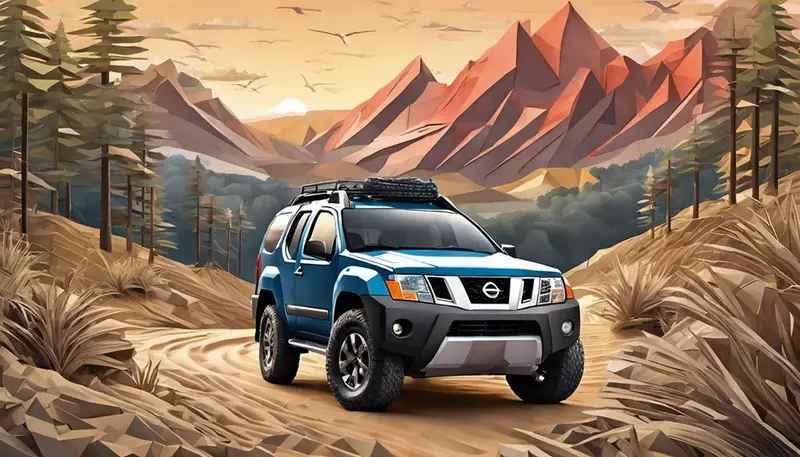
Exploring the advantages of the Nissan Xterra, it becomes evident that its off-road capability and spacious interior are among its most commendable features. The vehicle’s design and engineering enable it to handle challenging terrains with ease, supported by a high ground clearance and a sophisticated four-wheel drive system.
Additionally, the Xterra’s interior offers ample space for passengers and cargo, making it a practical choice for adventurers and families alike.
Off-Road Capability
Nissan Xterra’s exceptional off-road capabilities are underscored by its high ground clearance and robust four-wheel-drive system, making it a formidable choice for adventurers. Its design and engineering cater specifically to those who seek thrills beyond the paved roads, offering a blend of performance, reliability, and rugged aesthetics that stand out.
- Durable Components and Drivetrain: Ensures longevity and dependability, allowing drivers to confidently tackle off-road challenges.
- Advanced Four-Wheel-Drive System: Provides the versatility and capability needed to navigate difficult terrains with ease.
- Impressive Towing Capacity: With up to 5,000 pounds of towing capability, the Xterra is perfect for hauling recreational gear for camping, biking, or boating adventures off the beaten path.
Spacious Interior
While the Xterra’s off-road prowess offers a thrilling adventure beyond paved roads, its spacious interior also provides a comfortable and practical environment for both passengers and cargo. The Nissan Xterra is renowned for its ample head and legroom, ensuring a comfortable ride for passengers of all sizes.
With up to 66 cubic feet of cargo space, it excels in accommodating a wide range of hauling needs, making it more suited for cargo than passenger comfort. Although the seats may not be the pinnacle of comfort for prolonged journeys, they are pragmatic for various hauling requirements.
Furthermore, the Xterra’s focus on functionality is evident in its interior design, featuring easy-to-reach controls and a layout that prioritizes practicality over luxury, aligning with the vehicle’s utilitarian ethos.
Cons of Nissan Xterra
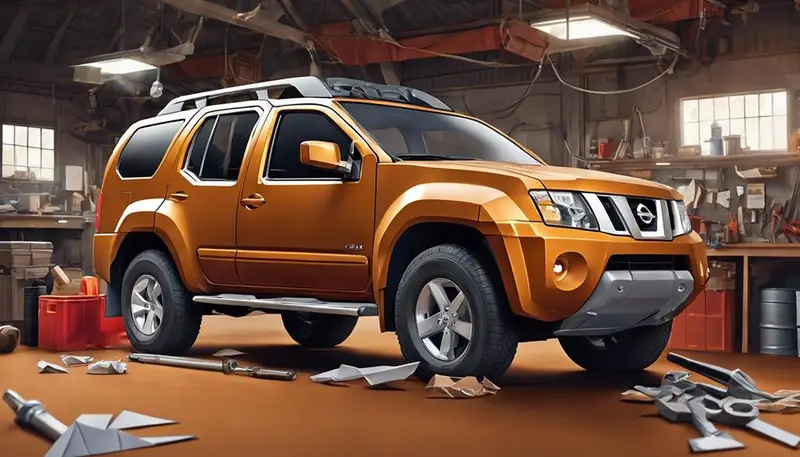
Despite its rugged appeal, the Nissan Xterra faces several drawbacks that potential buyers should consider. While the vehicle is known for its off-road capabilities and spacious interior from the previous discussion, there are aspects that might not meet everyone’s expectations. These concerns center around its performance on regular roads, fuel efficiency, and the level of comfort and safety it offers compared to other vehicles in the same category.
Here are some of the notable cons:
- Fuel Efficiency: The Xterra’s fuel consumption is on the higher side, with an average of 17 mpg in the city and 20 mpg on the highway. This makes it less economical for daily commuting and long drives, especially when compared to more fuel-efficient competitors.
- Ride Comfort: Its stiffer suspension system, designed for off-road durability, results in a rougher ride on paved roads. This may not appeal to those looking for a smoother driving experience.
- Limited Features: The Xterra comes with only one engine option and lacks the advanced safety features and interior refinement found in newer SUV models. This could be a significant drawback for buyers valuing customization and modern amenities.
Off-Road Capabilities

Acknowledging these drawbacks, it’s essential to highlight the Nissan Xterra’s standout off-road capabilities, which present a significant advantage for enthusiasts seeking adventure beyond the paved road. The Xterra’s design focuses on rugged terrain performance, featuring a high ground clearance and a part-time 4WD system that ensures reliable traction and stability in various off-road conditions. This capability is further bolstered by its sturdy body-on-frame construction, which offers durability and resistance against the rigors of off-road driving.
The vehicle is powered by a strong four-cylinder engine, optimized for the demands of challenging terrains. This powertrain, in combination with its robust suspension system, allows the Xterra to navigate through obstacles with ease, making it a top choice for off-road enthusiasts. Furthermore, the Xterra’s towing capacity of up to 5,000 pounds makes it an ideal companion for outdoor recreational activities, such as towing trailers or boats to remote locations.
The competitive 2015 model of the Xterra solidifies its reputation as a capable off-road vehicle. It provides enhanced traction and stability, suitable for all-weather conditions and varied terrains, ensuring a reliable and adventurous driving experience for those who venture off the beaten path.
Fuel Economy and Performance

The Nissan Xterra’s fuel economy, averaging 17 mpg in the city and 20 mpg on the highway, reflects its balance between performance and efficiency, particularly given its robust 4.0-liter engine and off-road design features. This SUV caters to those who prioritize capabilities over fuel savings, offering a commendable blend of power and ruggedness for various driving scenarios. The Xterra’s design and mechanical specifications underscore its appeal to enthusiasts of outdoor and off-road adventures, despite the potential for less-than-ideal fuel efficiency.
- Robust 4.0-liter Engine: The heart of the Xterra, this powerful engine ensures that the vehicle can handle both everyday driving and more demanding off-road conditions with ease.
- Stiffer Suspension and High Ground Clearance: These features enhance the Xterra’s off-road capabilities, making it a formidable contender in challenging terrains, albeit at the cost of a smoother ride on paved roads.
- Part-time 4WD System: Offers flexibility for drivers, allowing them to switch between two-wheel drive for better fuel economy on regular roads and four-wheel drive for improved traction and performance off-road.
While the Nissan Xterra may not lead the pack in terms of fuel economy, its performance, and specially tailored features for off-road adventures, make it a vehicle worth considering for those who value versatility and capability.
Buyer Considerations
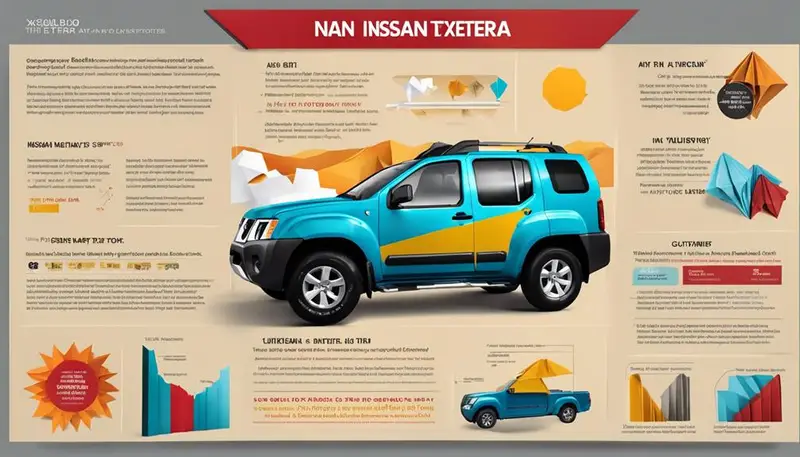
Having explored the Nissan Xterra’s fuel economy and performance, potential buyers should also consider several key aspects that further define its value and appeal. The Xterra’s exceptional off-road capabilities, highlighted by its high ground clearance and sophisticated four-wheel-drive system, make it a formidable vehicle for adventurous driving. This capability is complemented by the vehicle’s durable components and reliable drivetrain, which are synonymous with longevity and dependability, ensuring that the Xterra can withstand the rigors of both on and off-road use.
Furthermore, the Nissan Xterra’s versatile cargo space is a noteworthy feature. Its two-box design and foldable rear seats offer practical solutions for storage, enhancing its utility for everyday use and recreational activities. Speaking of which, with a towing capacity of up to 5,000 pounds, the Xterra is well-suited for hauling trailers, boats, or campers, making it an excellent choice for outdoor enthusiasts.
Lastly, the unique and rugged appearance of the Xterra distinguishes it within its class, appealing particularly to those who favor a vehicle that stands out for its distinctive style. These considerations are crucial for potential buyers, adding layers to the vehicle’s overall value beyond mere performance metrics.
Conclusion
In conclusion, the Nissan Xterra stands out for its strong off-road capabilities, durability, and versatility, appealing notably to those prioritizing outdoor adventures and reliability in an SUV.
Despite its commendable attributes, the vehicle’s discontinuation, lack of modern technological features, moderate fuel efficiency, and the potential for a rough ride due to its stiffer suspension present notable drawbacks.
These factors, alongside considerations regarding engine options, safety features, and maintenance, must be weighed carefully by prospective buyers.

